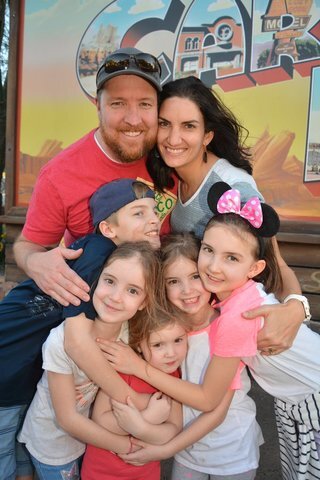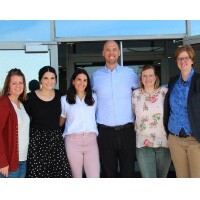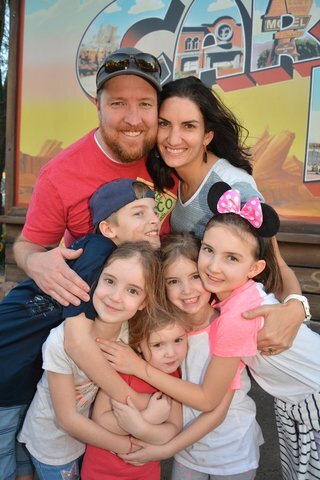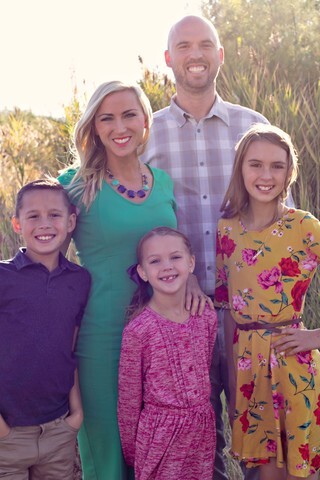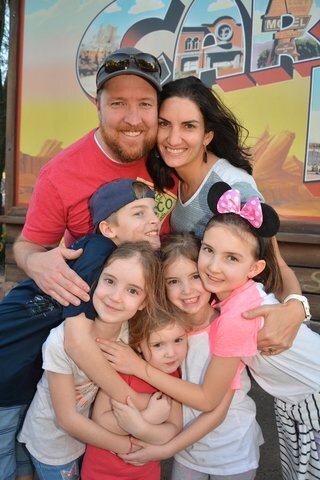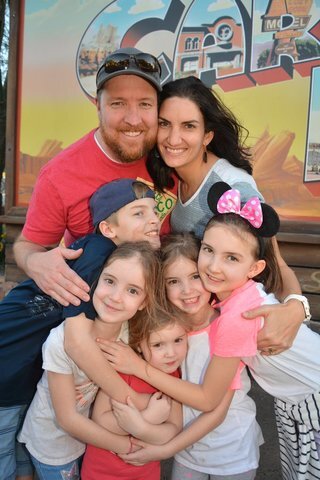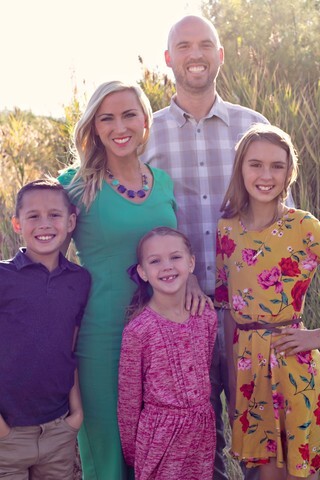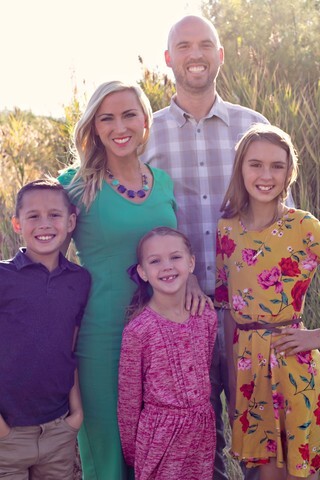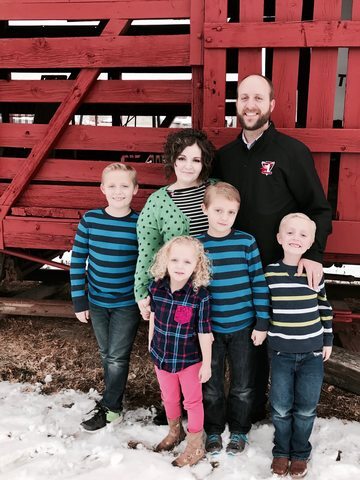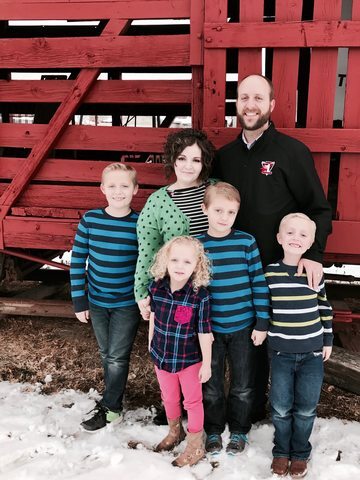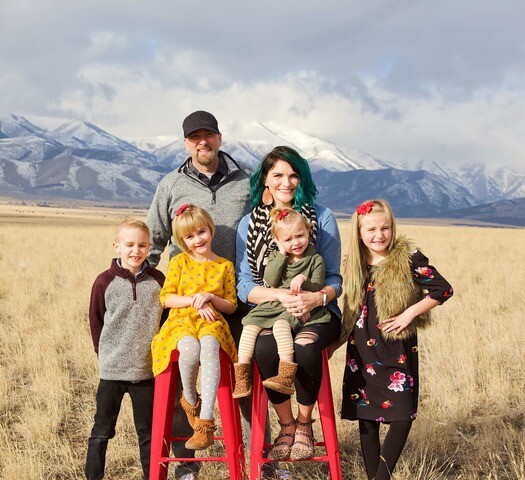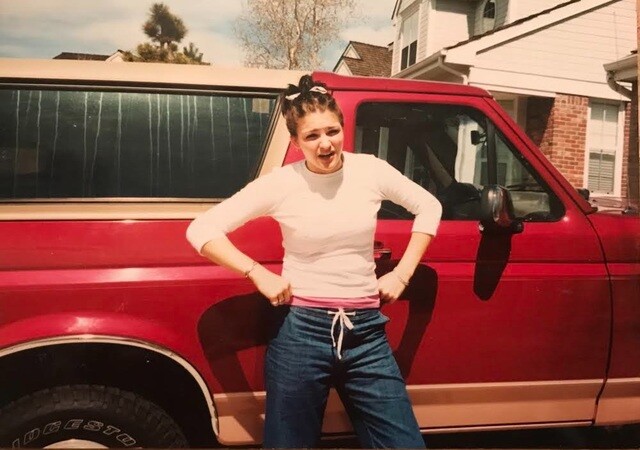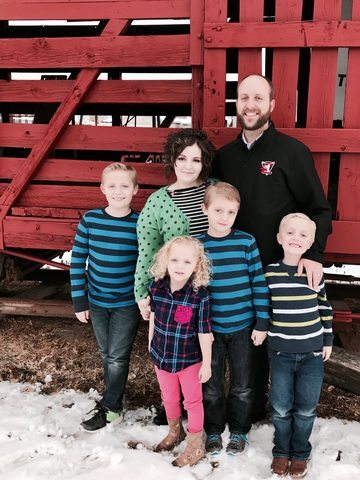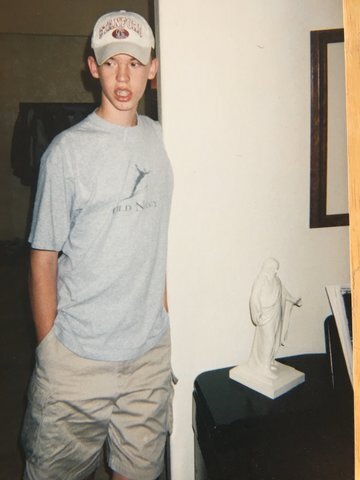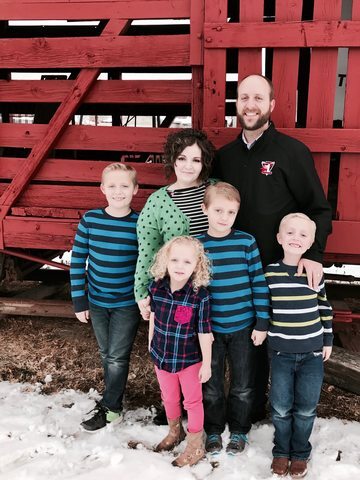Listen to a special episode of "All In" with Columbine survivor Will Beck by clicking here.
Twenty years have passed, but there are a handful of people who still recall every detail of their experience on April 20, 1999. You might also remember where you were that day when you are reminded that April 20, 1999 was the day of the Columbine shooting. It is one of those days that becomes permanently etched in one’s memory. But Latter-day Saints Sarah Green Bush, Laura Green Hall, Will Beck, and Aaron Hancey don’t just remember where they were. To this day, they recall the entire scene in vivid detail—what they were wearing that day, conversations they had, conversations they heard, the way they felt before, and the way they felt after.
They are adults now in their mid- to late 30s with their own children. But the memory of that day has never gone away. It has become a part of who they are and ultimately shaped who they have become as they have learned that surviving Columbine wasn’t a singular event they have moved past. Surviving Columbine is a process they are still working through each day.
Sarah Green Bush
Sixteen-year-old sophomore Sarah Green was five minutes into math class when she heard explosions outside of her classroom. Her first thought was that she must be hearing some kind of senior prank. She looked around and got back to work. Minutes later, the Columbine High School baseball coach came into the room yelling and telling everyone to get out.
“It’s really unsettling to hear somebody being that loud and that coarse,” she says, describing that his use of foul language sent a clear message that whatever was going on was serious.
As the students ran for the door and into the hallway, Sarah found herself running in the opposite direction of some of the other students. She would later learn that, unbeknownst to her, she had run away from where the shooting was happening. She was able to get out of the school within a few minutes of the initial shots being fired.
From a field across from the building, she watched as the SWAT team arrived and helicopters began to circle the school. As she watched, gunfire suddenly began to be exchanged between the SWAT team and the shooters, shattering the windows and spurring Sarah to start running again. She and 15 other students ended up huddled on a stranger’s couch, watching the news and trying to figure out what was going on. The news station announced where parents could be reunited with their Columbine students at a nearby elementary school, and Sarah went in hopes of being reunited with her parents. Instead, she experienced what was one of the more traumatic parts of that day as she was ushered onto the stage with other students while her name was repeated: “Sarah Green. Sarah Green. Sarah Green.”
“It was like being auctioned off,” Sarah says. “It was terrible.”
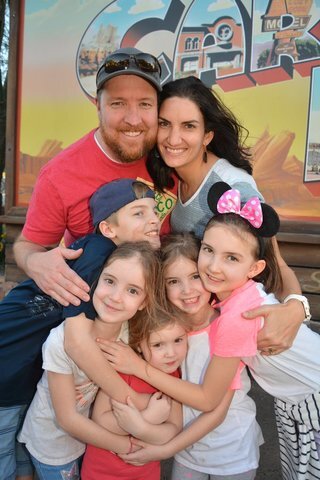
She recalls one parent approaching her and asking, “Have you seen my son?” Days later, she learned that he was among those who had been killed. Sarah was likewise concerned about someone she feared might still be inside the school: her little sister, Laura, who was a freshman at Columbine.
Confusion over multiple reunification locations made finding her mother difficult, but upon finally being reunited, Sarah and her family waited for hours as lists were brought in with names of those who had been identified as safe. They scanned each list for Laura’s name.
“We just sat there for hours and watched these lists come in without my sister’s name on them,” Sarah says.
Thankfully, Laura’s name did come. However, when the sisters, who are just 18 months apart, were reunited, Sarah quickly recognized that her experience had been very different from Laura’s.
“Just by looking at her, we knew that she had witnessed some really, really terrible things,” Sarah says.
Laura Green Hall
Freshman Laura Green was eating lunch near the stairs in the downstairs cafeteria at Columbine when, all of the sudden, students around her began to get under their tables. She followed their lead before she heard the popping sound. A school janitor told everyone to run, so Laura jumped the railing next to her to get to the stairs, despite the fact that she was wearing a skirt that she remembers slowed her down. Feeling alone in a huge wave of students going up the stairs, she was relieved when she ran into her best friend, who had come back down the stairs to retrieve a lost shoe. The girls screamed hysterically as they entered what had been a completely normal choir class.

Following a group of seniors, Laura and her friend went into the choir office—a very small room with no windows—where she joined an estimated group of 40 students who turned off the lights and barricaded themselves in the office using desks and a filing cabinet. As Laura speaks of her experience 20 years later, she describes the things she heard over the course of the next three hours: gunshots and screams on the other side of the door, homemade bombs, and activated fire sprinklers. But Laura’s only focus was her older sister, Sarah’s, safety.
“I heard this girl call her mom and say, ‘I love you, goodbye.’ I thought ‘Well, this is it for me, but what about Sarah?’ So I sat under the desk and I prayed and I prayed and I prayed,” Laura says. “I have no idea how long it was. It feels like an hour but really I have no idea. I just prayed and I didn’t stop. And I got an answer in that choir office. . . . I didn’t know where she was, but I felt extremely peaceful that she was going to be okay.”
Despite this, Laura, unable to stop crying, began hyperventilating and was placed on top of a filing cabinet as her schoolmates removed ceiling boards to help her get some fresh air. Being shut in the room for hours, she also remembers having to use the bathroom in the choir teacher’s thermos.
Finally, it seemed that rescue had arrived when a SWAT team pounded on the door. But the students’ relief was quickly turned into additional trauma.
“They were very abrupt and very angry,” Laura says. “They used a lot of [harsh] language, and [when] we got out, [we] had 12 machine guns pointed at our faces because we were all suspects.”
The students linked themselves together by putting their finger in the belt loop of the person in front of them as they were led out of the school, wading through a foot of water, food, books and backpacks. The SWAT team had them walk through the doors that the shooters had come in, forcing Laura to witness what she says looked like a scene from a horror movie.
“We got outside and I found at my feet one of my classmates, Daniel Rohrbough, that I had grown up with since 2nd grade, and he was dead on the ground. I had to walk over him,” Laura recalls, adding that at the top of the stairs she saw the body of her friend, Rachel Scott, who had also been killed.
From there the students were shuttled to the reunification sites in police cars. SWAT teams were on the roof pointing guns at them, people were shouting commands at them, and Laura remembers hitting her head as she dove into an already-packed police car, not wanting to wait another second to get away from the school.
She endured the same painful experience as her sister at the reunification site, as her name was repeated again and again on the stage with no one initially claiming her.
“That was a horrible, horrible feeling,” she says. “It was like it was never-ending. I just wanted to go home. I wanted my mom, I wanted my dad, and I wanted to be done.”
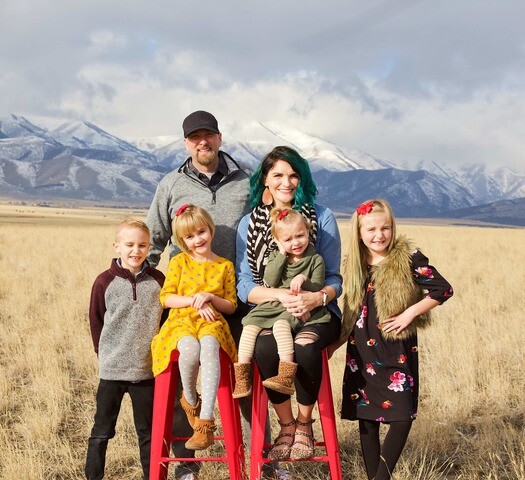
She was passed around between families in her stake until her parents and Sarah finally found her. Though relieved, Laura was not surprised to see her sister, because of the reassurance she had already received under the desk of the choir office. However, Laura says, “I remember Sarah looking at me and wondering, ‘What in the world happened to you?’ because she just had a very different experience and was confused about why I was so dramatic and traumatized.”
Aaron Hancey
Aaron Hancey’s life in high school revolved around choir. The junior was supposed to be in choir class during 5th hour, but because of a performance later that evening, he was actually in the science area completing a chemistry lab when he began to both hear and feel bombs going off. Teachers came into the classroom, locked the doors, and told him and the other students what was happening. Someone asked if anyone knew first aid. An Eagle Scout, Aaron answered in the affirmative.
He was taken to a classroom where Dave Sanders, a computer and business teacher who also coached the girls’ basketball and softball teams at Columbine, lay with gunshot wounds on the white linoleum floor. For the next three hours, Aaron did all he could to keep Sanders alive. Using the telephone in the classroom, the 17-year-old called his father, a lifelong scouter, who walked him through what to do to treat Sanders while simultaneously calling the paramedics on a second line and relaying questions to his son.
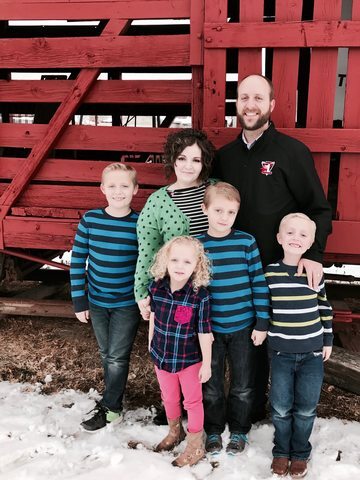
Aaron remembers pulling family photos out of Sanders’s wallet showing them to the teacher in an effort to take his mind off the pain. He reassured Sanders repeatedly that everything was going to be okay.
After three hours, a SWAT team arrived and evacuated the students, telling Aaron that he couldn’t stay with Sanders.
“He was conscious and alert,” Aaron says. “He was alive when we left him.”
But Dave Sanders passed away in that room at some point after Aaron left—the only teacher victim of the shooting.
Will Beck
Will Beck got to school early on April 20th and went to the library, where he met up with two friends. One friend, Dan, was kind of a stereotypical nerdy kid, as Will recalls, and despite their being friends, Will had, at times, made fun of Dan. But that morning, Will felt that he should apologize.
“I just said, ‘Hey man, I’m sorry for giving you a hard time, and I hope we’re cool.’ And Dan was just really great. [He said,] ‘No big deal man. Don’t even worry about it,’” Will remembers.
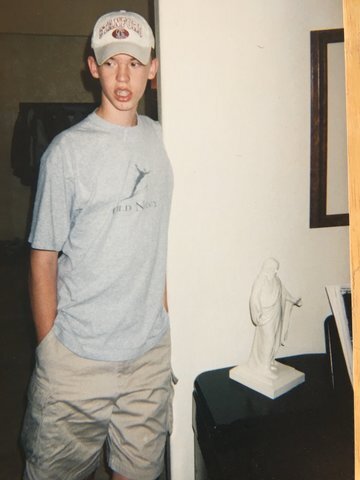
From there, Will went on with his day, taking tests in both biology and math before heading to English class where, after completing an essay test on Steinbeck’s Cannery Row, he had a feeling that he should say a prayer. This wasn’t a usual practice for the sophomore, but he bowed his head and said a prayer of gratitude. The bell rang, and without another thought, Will joined several friends to eat lunch outside, which is where he was when he began to hear what sounded like firecrackers going off. Like Sarah, Will thought it was a senior prank. He and his friends stood up to try to see what was going on. That’s when they saw them: two shooters on top of a hill just feet away. Will watched as a boy five feet or so in front him was shot twice.
Rushing back into the school, Will and his friends planned to hide in the bathroom until the shooting was over. They stood on top of the toilet in an effort to hide their feet if the shooters came into the bathroom. There, standing on top of the toilet, Will again began to pray.
“I stopped, and I said a prayer in my heart. I was like, ‘Heavenly Father, I’m really scared. Please help me get out of here,’” Will recalls, adding that a bomb shook the building in the middle of his prayer. “And then I had a feeling, like the strongest feeling ever, that was like ‘Get out.’ And I was like, ‘We need to go.’”
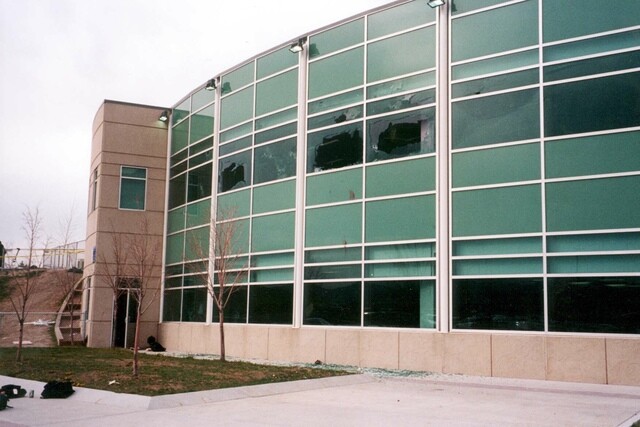
Columbine High School is photographed following the shooting. This is where Will Beck stood where he saw the shooters on the top of the hill in the left of the photograph. The door pictured is the door Will Beck walked into and the one Laura Green walked out of; the backpack by the door belonged to Will Beck. The windows that are shot out are the library, the cafeteria is just below.
He says that the scariest moment of that day was not watching the shooters atop a hill just feet away from him, but walking out of that bathroom not knowing what he would find on the other side of the door. That particular bathroom was later destroyed by the attackers who entered with guns and set off bombs.
After exiting the bathroom, a teacher motioned Will and his friends through a back door to the school’s auditorium stage. They made their way through the auditorium and were ultimately able to make their way out of the school, finding safety at an apartment complex across the street. He would later learn that his friend, Dan Mauser, was among those whose lives were taken. Will has always been grateful for the simple conversation they shared that morning in the library.
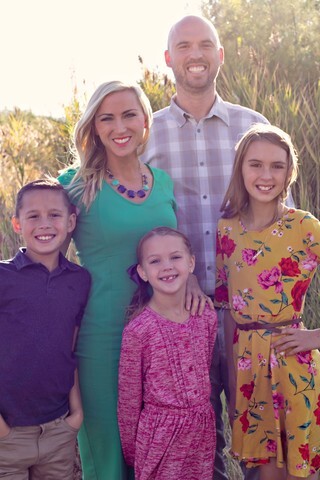
“It just blows my mind that God would allow me to talk that through and find that kind of forgiveness from him,” Will says in retrospect.
Looking back on that day, Will, now a financial advisor in the Salt Lake City area, says he knows God was at Columbine that day.
“He was with us. I felt Him when I was there,” Will says. “God doesn’t force people to do anything. He doesn’t control anyone, so if people want to be bad, He’s going to allow them to be bad, but He’s going to help people overcome. The whole gospel is about overcoming. It’s about having a challenge, having an obstacle, and then relying on God for help and having Him carry you home.”
A New Normal
In the aftermath, each survivor had indications that life had been changed permanently by the events of Columbine. For Laura Green, it was fear.
“I slept in my mom’s room . . . pretty much until I graduated from high school,” she says. “I either slept on my parent’s floor or on Sarah’s floor. I was afraid of the dark. I was afraid of people. I was definitely broken, and I was too young to realize that I was traumatized and that these were things I was going to have to deal with for the rest of my life.”
Laura told her mother that she was never going back to Columbine.
“And immediately, we didn’t,” she says. “We went to our rival school, but [my mom] worked with me all through the summer. My mom is amazing, and she said, ‘I’m going to make you go back because I want you to do this, and I want you to realize we’re not going to let them win.’”
Despite the support from home, Laura struggled. If there was a fire alarm at school, she went home. The school’s front office learned to expect her frequently. Meanwhile, she tried to understand why she seemed to be struggling more than others around her.
“It didn’t seem to have broken them like it did me,” Laura recalls
Her reactions affected her self-confidence for years, but it wasn’t until seven years after the shooting, when she returned home from her mission early due to PTSD, that Laura really began to find help in processing her grief.
“I think each person experiences it so personally and so individually, and I wish that I knew that [then],” Laura says. “I would’ve saved myself years of suffering and comparing and worrying about why I was grieving so much differently than other people.”
Sarah agrees. “All of these people suffered this terrible event, and not one person has suffered it in the very same way as another. There’s only one person who knows exactly how we feel, and we need Him. We need to be able to give our trials and our burdens to Him because we can’t do it alone.”
What happened 20 years ago continues to shape the lives of these survivors.
“I think about it often. I don’t know if it’s daily. I have my wife, and I have my four kids, and I need to be present with them. I need to be actively engaged with them in developing relationships,” Aaron, who still resides in Colorado, says.
But even as parents, Columbine can be haunting. For Sarah, mundane tasks like grocery shopping include identifying the emergency exits, and if she hears a loud bang, she still panics. Sending their kids to school can also be extremely difficult, and subsequent school attacks like Sandy Hook and Parkland bring emotions back to the surface.
“When Sandy Hook happened, that was just a huge, huge blow to me,” Sarah recalls. “I remember my son was in kindergarten, and so he was really, really close to the age of those kids. I went to pick him up from school, and I just bawled. I got out of the car, and I normally would’ve waited in the car, but I ran and I grabbed him. . . . I had to hold him.”
Rebels for Change
In the years since Columbine, Sarah says a lot of law enforcement officers have told her that they call Columbine “Ground Zero” in terms of school violence. They recognize that it was, in many ways, a study in what not to do that provided a learning experience in how to better prepare for similar situations. But after the Parkland shooting in 2018, Sarah, Laura, and Will, who all now live in Utah, felt a need to do more, to share their story and advocate for better school security and support for mental health.
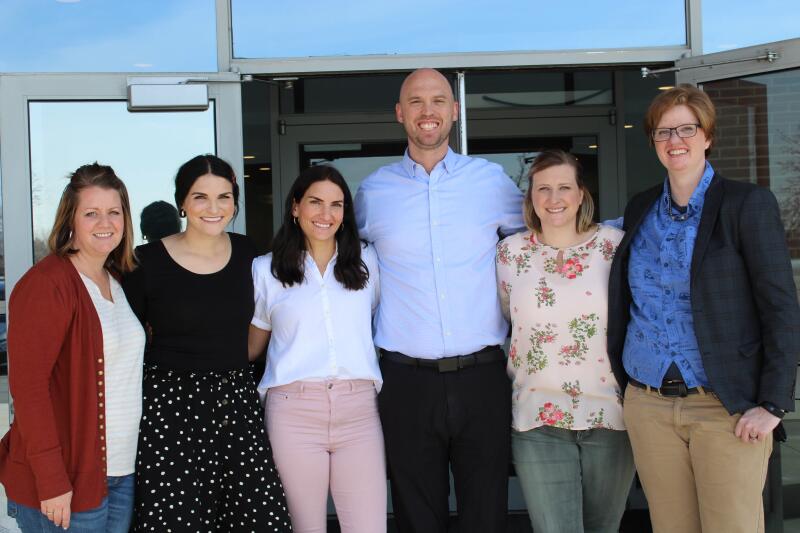
Speaking at local schools and even the Utah State Capitol, the group shares not only their story but also some things they learned from their experience.
“One thing that we’ve talked about a lot as alumni and friends that have gone through this is [that] we want to empower our kids with the ability to make decisions based on their instincts, and so if they’re told to do something by their teacher . . . but when it comes down to that moment they think, ‘You know what, I need to run and I need to get out of here, we want our kids to feel like they can do that,” Sarah explains.
It is through sharing their experiences that they continue to find purpose in their pain. Laura says she believes that while God didn’t plan Columbine, God has helped use this experience to shape herself and others into better people. She also believes that as shootings seem to be happening more frequently, the repercussions of Columbine have blessed others in providing opportunities to raise awareness and keep others safe.
Surviving Columbine
As we all look back on the 20th anniversary of Columbine, the survivors hope others won’t dwell on the negative. They certainly aren’t.
“I hope that after 20 years we can see that, first of all, we can do really hard things,” Laura says. “I hope they can see that time heals and that the more love and rallying we do around each other, the better it is going to be.”
What they have found over time is that they didn’t just survive Columbine on April 20, 1999. Survival has been found in the days, weeks, and months since.
“I survived Columbine because I learned to embrace God,” Will said. “I eventually embraced the fact that I needed Him to survive.”
Lead Image: Rebels For Change photographed from left to right: Rachel Burr, Laura Green Hall, Sarah Green Bush, Will Beck, Kari Bryan and Kathy Carlston. Photo by Morgan Jones. Other photos provided by Sarah Green Bush, Laura Green Hall, Aaron Hancey and Will Beck.
